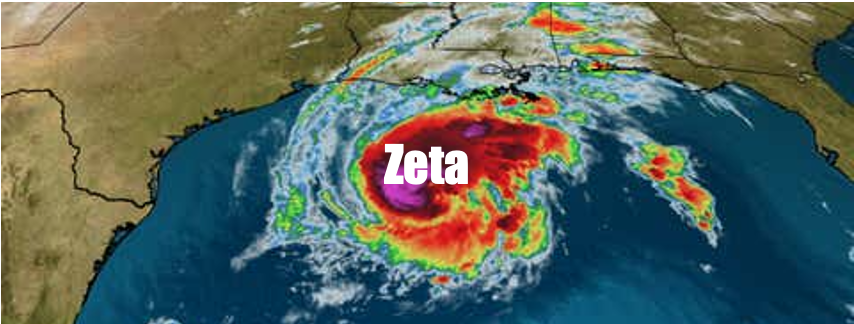Business Interruption Values
Jeff Esper
The Best Way to Look at BI Values & Exposures

As a forensic accounting firm specializing in policyholder insurance recovery, we are frequently asked to measure business interruption values and exposures for our clients. The potential for improvement with BI values reporting is obvious and prevalent across the insurance industry. Some clients are looking for a more streamlined process and others are concerned about the accuracy of their numbers, but they all suspect that both can be improved.
Business Interruption (BI) values are an important requirement of the insurance process. The challenge is finding a repeatable, efficient system that produces an accurate measurement of your BI exposure. Consider for a moment, just how important this information is to your underwriter. The numbers you report gives the underwriter the basis for not only writing coverage, but is the basis for calculating premium. Each renewal gives you, the policyholder, the opportunity to present your unique BI risks, however, this opportunity is often squandered due to a multilateral misunderstanding of business interruption values and the exposures they represent.
So what is the best approach? Get help from a firm you can trust.
RWH Myers’ partners and professionals provide extensive loss accounting services spanning a broad range of industries and insurance issues. This expertise and knowledge of business interruption loss accounting helps policyholders quantify their exposures and achieve accurate BI values.
Our team will work with your organization to define your BI profile that differentiates your risk in the market. We will collect, measure and report the information that best represents your BI risks. The forensic accounting methodology used is always customized to each organization we serve and we offer various levels of analysis to meet your goals, including:
- Ratable BI value
- Allocation by location for the schedule of values
- CBI / Supply Chain / third-party exposures
- Key process / location exposure analysis
- Cyber BI
As shown above, BI Values and Exposures studies typically fall within the following categories: annual BI Values, consolidated or by location, and annual BI Values by location with detailed analyses of the realistic exposures to loss. These exposure analyses provide quantifications of, and explanations for Maximum Foreseeable Loss (MFL) and Probable Maximum Loss (PML) exposures, as well as consideration of extra expense and contingent exposures.
The exposure analysis should consider relevant factors such as supply chain, interdependent locations, business continuity and disaster recovery plans. The exposure analysis provides the necessary information to determine appropriate limits and sub-limits of insurance. This sets your BI underwriting submission apart to maximize the capacity competing on your program.
When it comes to this area of a policyholders risk portfolio, it's not a matter of "if" an independent evaluation is needed. It's a matter of "when." For a marginal cost, our analysis's will deliver value with every subsequent renewal.
Email Jeff Esper at jeffesper@rwhmyers.com for an estimate and make your "when" happen now!
Insights Worth Sharing

Making a business interruption claim is more than just an accounting exercise. It requires a good strategy, a thoughtful process and perhaps most of all, patience. These lessons come from experience and the team at RWH Myers has earned it from decades of preparing BI claims. Though this topic is of the philosophical nature, it is just as important as the details behind a business interruption calculation. So let’s dive in and see what you really need to make a BI claim. Strategy Every loss is different. You can’t apply the same game plan and the same approach to every claim. You have to assess the situation and all its parts to devise a specific workable strategy. Experience will help ensure your strategy is appropriate for the situation, but the claim will take on a life of its own. The initial loss assessment is derived from the loss information such as what happened, the timeline of events, the impact to operations and how long it will take to get back to normal. As forensic accountants, we will look at the entirety of the situation and dissect it from every angle to figure out the full scope of loss and then determine the best approach to measuring and supporting the claim. We will also anticipate how the claim will be adjusted and plan for arguments against the claim. Taking the time to develop a proper strategy will pay off at every stage of the claim process. Process Once you understand the situation and have designed an effective strategy, you can lay out a process to get to the desired result. The process starts off with identifying and assembling the team to execute the plan. The claim will require data from various sources and input from key internal experts to provide insights as to the impact on operations, both upstream and downstream. The process also includes managing claim adjustment, from setting the timeline to handling requests for information. During the process, your claim preparer will work to keep all phases of the claim moving forward whether with data gathering or insurer feedback. Claims tend to start out with a high level of attention, but it is common to lose momentum. Simply put, a well-defined process will keep the claim moving, limiting distractions and roadblocks. Patience Patience doesn’t equate to conceding to a lengthy and arduous process. It’s just the opposite. By definition, it means, “quietly and steadily persevering or being diligent, especially in detail or exactness.” It is important to understand that certain parts of the claim take time to develop, and that time is critical to ensuring a thorough and well thought out claim presentation. For example, taking your time in the beginning of the process to lay out the foundational elements of the claim will avoid obstacles that may delay claim settlement and the amount recovered. It’s best to set expectations early and commit to the process. Again, practicing patience will expedite the claim process and improve the outcome. You can rely on the experience of your forensic accounting team to lead that effort. So, you see, it’s not all about the numbers. There is more to the intangibles than you may have thought. Every claim has its own unique challenges. You should be prepared for anything and everything. Again, preparing a claim is just as much strategy, process, and patience as it is the technical elements of claim preparation.

Property damage insurance claims are among the most infrequent for corporate policyholders, but this year Louisiana has suffered through a record number of Hurricanes. When catastrophe strikes, recovering insured losses essential to rebuild and resume operations. Effected policyholders will need expert help to evaluate, organize and document their claim to present to insurers. Forensic accountants that devote their practice to preparing claims for policyholders have every day experience just as adjusters and auditors do, so it is certainly to your advantage to hire a firm of experts to represent your interests throughout the property damage and time element claim process. Though the specific insurance claims and the policyholders may change, the vital steps to recovery remain the same. One thing both sides agree on is that the claim process goes smoother when the policyholder is well prepared for demands of a claim from start to finish. The partners at RWH Myers prepared a detailed guide to assist policyholders in preparation for claim recovery. It is designed to serve as a resource and a framework for the claim process and includes the following sections: Establish Appropriate Accounting Methodology: Provides guidance and an organizational framework for post-loss activities, establishing specific accounts to capture the loss. Property Damage Expense Categories: Explains the types of expenses that may be included in each category of coverage and the documentation required for these costs. Claim Preparation Objectives and Overview: Identifies objectives for the claim preparation process, and provides a conceptual framework for achieving them. What is Covered: Examines the direct and indirect exposures to loss that are typically encountered, and provides guidelines for determining whether specific types of property damage losses are covered under the policy. Claim Preparation Procedures: Suggests timetables for the submission of inventory, property damage, and discusses the format and content of standard claim submissions. Audit and Settlement Guidelines: Discusses the procedures undertaken by the insurers adjusters and experts, and provides an overview of the settlement process. Click here to download the full guide.


